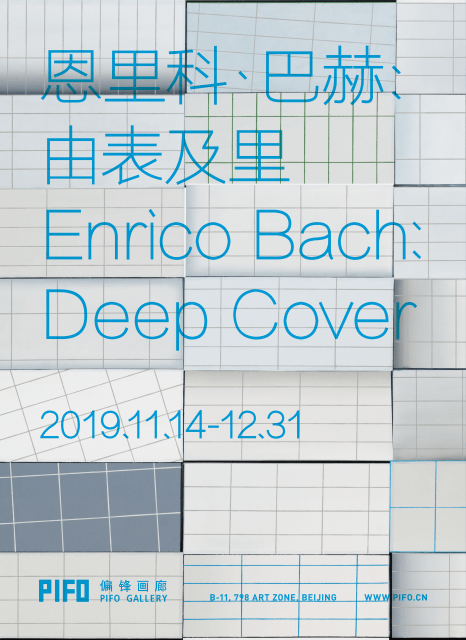PIFO Gallery is pleased to present you the German artist Enrico Bach’s second gallery solo exhibition in China, Enrico Bach: Deep Cover, which will include his works since 2016. In recent years, Enrico Bach has held solo exhibitions in China in different places as PIFO Gallery, Guangdong Museum of Art and the Long Museum hiart space, and also participated in many international art fairs such as ABHK, Art Cologne, Vienna Contemporary, West Bund, Art021 Shanghai and Art Shenzhen.
Enrico Bach's recent works are treading the fine line between a sculpturally plausible painting and painting that joyfully embraces its own self-sufficiency, which follow the sensitive spirit of a young artist from the initial industrial schema, and freely connect with the spirit of the traditional western painting images in the in-depth visual structure. With their casual references to real, daily necessities, his current compositions exude a surreal charm for they operate on the borderline between liberty with meaning and allusions to the banal.
-----------------------------------------------
Bach’s pictorial inventions draw on a number of achievements in the history of European art. They are heirs to the tradition of still life painting that sought to define art and its epistemology, to both analytical and synthetic Cubism as well as to the Op Art of the 1960s that grew out of Bauhaus geometry. At the same time some of Bach’s works refer back to the colour–light dramaturgy of the early modern era and Dutch Baroque art, while others reference the trompe-l’oeil still life paintings of the seventeenth and eighteenth centuries, particularly the mischievous art quodlibets, which assembled writings, letters, notes, and objects from middle-class writing rooms into cryptic portraits of their owners, into small cabinets of evocative memorabilia or portraits of friends and family.
His works cannot be read as a rebus can, nor do they tell stories, but present details and sections of instrumentaria — folders, indexes, grids — which can be used to produce order and structure, the media of an epoch that generates and manages data. Once upon a time trompe-l’oeil not only demonstrated the mastery of the artist as a worthy successor to Zeuxis, but also told us that we should not trust our senses and sensory impressions implicitly because they can be deceived and seduced, are easily thrown off balance.
In a calculated and well-ordered way, Bach’s paintings thematise discontinuity without drama. Nevertheless, one cannot help but think that they also reflect on contemporary phenomena: our interaction with more and more surfaces, superficiality, and changing sets and backdrops — even if it’s only on the surface.

